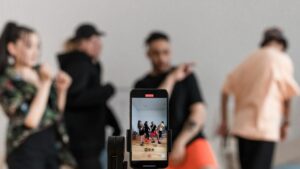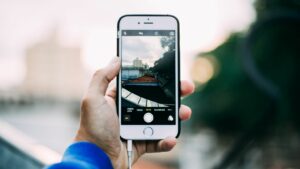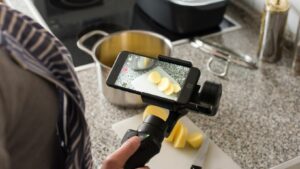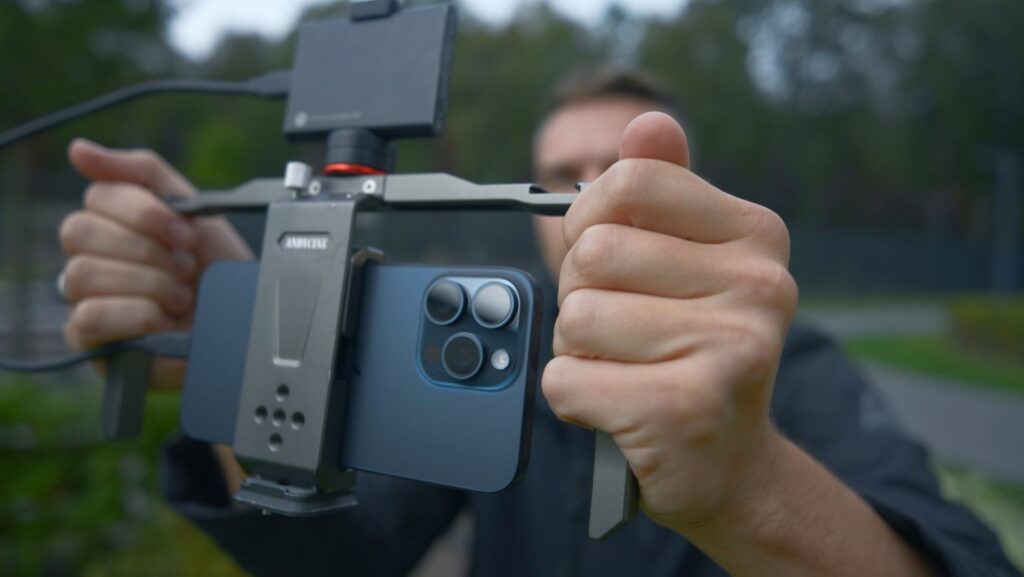 In today’s digital age, capturing high-quality video content is more accessible than ever, thanks to the powerful cameras in our pockets. The iPhone stands out as a versatile tool for both amateur and professional videographers alike. Whether you’re creating content for social media, documenting personal moments, or producing professional videos, mastering the art of recording yourself on an iPhone can elevate your footage significantly. However, achieving that polished look requires more than just pressing the record button. From lighting to angles, there are several factors to consider to ensure your videos are both engaging and visually appealing. Understanding these elements can transform your recordings from amateur to professional in no time. With a few strategic tips, anyone can harness the full potential of their iPhone’s camera to create stunning videos. Let’s explore some essential techniques to get the most out of your iPhone video recordings.
In today’s digital age, capturing high-quality video content is more accessible than ever, thanks to the powerful cameras in our pockets. The iPhone stands out as a versatile tool for both amateur and professional videographers alike. Whether you’re creating content for social media, documenting personal moments, or producing professional videos, mastering the art of recording yourself on an iPhone can elevate your footage significantly. However, achieving that polished look requires more than just pressing the record button. From lighting to angles, there are several factors to consider to ensure your videos are both engaging and visually appealing. Understanding these elements can transform your recordings from amateur to professional in no time. With a few strategic tips, anyone can harness the full potential of their iPhone’s camera to create stunning videos. Let’s explore some essential techniques to get the most out of your iPhone video recordings.
Tips For Video Recording Yourself On Iphone
Recording high-quality videos on an iPhone is both accessible and straightforward with the right techniques. Understanding specific features can enhance the result significantly.
Resolution and Frame Rate
Selecting the correct resolution and frame rate is essential for video clarity. Users might choose 1080p for standard quality or 4K for higher precision if storage allows. For frame rate, 30fps offers a good balance, while 60fps benefits fast movement scenes. Always adjust these settings based on the final video platform requirements to ensure optimal performance.
Stabilization Features
iPhone’s stabilization features contribute to smooth video outcomes. Optical Image Stabilization (OIS) on certain models minimizes motion blur effectively. Additionally, using a gimbal or tripod further enhances steadiness, especially for handheld shots. Activating cinematic mode, when available, creates a dynamic depth of field, adding professional polish to recordings.
Optimizing Lighting
Good lighting enhances video quality on an iPhone. Properly managing both natural and artificial light boosts visual aesthetics.
Natural Light vs. Artificial Light
 Natural light often provides a softer, more flattering look in videos. Shooting near windows or outdoors during golden hour (just after sunrise or before sunset) maximizes this effect. Artificial light offers control over intensity and direction, ideal for indoor shoots or low-light conditions. LED panels or ring lights produce consistent lighting, and adjusting their position and distance varies the shadow and highlight balance in recordings.
Natural light often provides a softer, more flattering look in videos. Shooting near windows or outdoors during golden hour (just after sunrise or before sunset) maximizes this effect. Artificial light offers control over intensity and direction, ideal for indoor shoots or low-light conditions. LED panels or ring lights produce consistent lighting, and adjusting their position and distance varies the shadow and highlight balance in recordings.
Using Reflectors and Diffusers
Reflectors bounce existing light onto the subject, reducing shadows and adding brightness. They come in various colors: silver for stronger reflection, white for softer light, and gold for warmer tones. Diffusers soften and spread light from harsh sources, preventing glare and harsh shadows. Placing a diffuser between a light source and the subject balances light distribution, creating a more even and professional appearance in video recordings.
Framing and Composition
Effective framing and composition give videos a polished and engaging look. The iPhone’s camera features enhance these elements through simple yet powerful techniques.
Rule of Thirds
 The rule of thirds divides the frame into nine equal parts using two horizontal and two vertical lines. Aligning subjects along these lines or their intersections creates balanced and dynamic compositions. Activating the grid feature in the iPhone’s camera settings helps users apply this rule easily, ensuring visual interest in the final video.
The rule of thirds divides the frame into nine equal parts using two horizontal and two vertical lines. Aligning subjects along these lines or their intersections creates balanced and dynamic compositions. Activating the grid feature in the iPhone’s camera settings helps users apply this rule easily, ensuring visual interest in the final video.
Background Considerations
A clutter-free background keeps the focus on the subject, preventing distractions. Choosing a simple, neutral backdrop enhances the subject’s prominence. When filming outdoors, natural textures like grass or sky serve as effective backgrounds. Keeping distance between the subject and the background adds depth and contrast to the composition.
Audio Quality Tips
Mastering video recording on an iPhone is only part of the equation; audio quality is equally vital. Users should consider investing in an external microphone for clearer sound capture. Lavalier mics or shotgun mics can significantly enhance audio clarity, especially in noisy environments. Additionally, using a windscreen outdoors helps minimize unwanted noise. It’s also beneficial to record in quieter settings to reduce background interference. By paying attention to audio details, users can ensure their videos are not only visually stunning but also aurally engaging, creating a more immersive experience for viewers.

